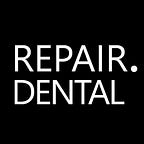Is your dental sensor not working? It could be because of an issue with your USB port or hub
In modern dentistry, dental sensors are essential for taking detailed X-ray images that help dentists diagnose and plan treatments. But sometimes, these sensors don’t work properly. Surprisingly, one reason for this problem could be the USB hub, which is a device that lets you connect many USB devices to one computer port. This article explains how dental sensors and USB hubs can cause issues, like bad image quality or slow data transfer, and provides solutions to fix these problems.
Understanding Dental Sensors and USB Hubs:
Dental sensors are advanced devices that change X-ray pictures into digital data. Dentists use these images to spot oral health issues. Dental sensors connect to a computer or imaging software with a USB cable. A USB hub allows multiple USB devices to connect to one computer port.
USB Hubs and Signal Problems:
USB hubs can be useful because they give you more USB ports, but they can also create signal problems for dental sensors. Dental sensors need fast data transfer to show images properly. USB hubs might not always provide stable power or connections, which can disrupt the signal. Using cheap or old USB hubs can make these issues worse.
Common Problems Caused by USB Hubs:
1. Signal Loss: Some USB hubs don’t have enough power or good connections, which can make dental images look blurry or incomplete.
2. Slow Transfer Speed: Inadequate USB hubs can slow down the image display during dental procedures.
3. Connectivity Problems: USB hubs with loose connections or broken ports can disconnect the dental sensor often, which is frustrating for dentists.
Solutions for USB Hub-Related Problems:
1. Use high-quality USB hubs with stable connections and enough power. Look for USB 3.0 or newer for faster data transfer.
2. Connect the dental sensor directly to the computer’s USB port when possible. This avoids signal problems from USB hubs.
3. Make sure the USB hub has enough power, either from an external power source or a powered USB hub. This keeps the dental sensor working well.
4. Organize the USB cable properly to prevent accidental disconnections or damage.
5. Clean the USB ports on the computer, USB hubs, and dental sensor connectors regularly. Dust and dirt can disrupt the signal, so keeping everything clean helps avoid issues.
Conclusion
Dental sensors are important in modern dentistry, but USB hubs can affect how they work. By understanding the issues caused by USB hubs and following the solutions mentioned, dental professionals can make sure their dental sensors work smoothly. Using good USB hubs, connecting directly to the computer, ensuring enough power, managing cables, and regular cleaning are important to get the most out of dental imaging technology.
Visit Repair.Dental or follow on Facebook and Instagram.
